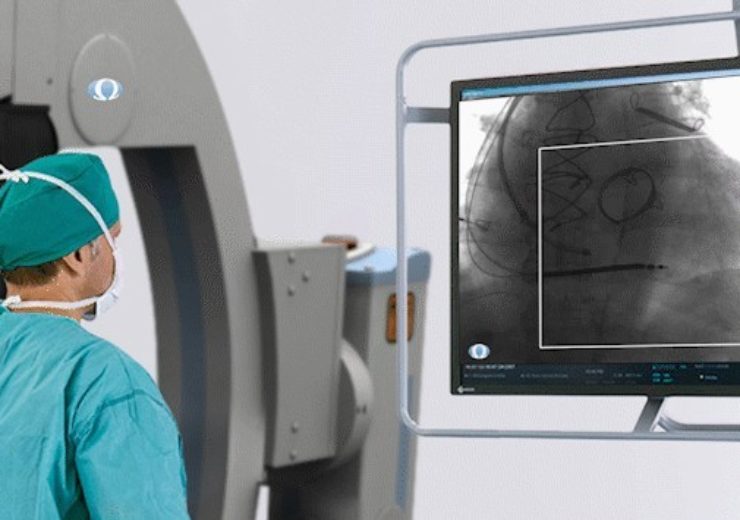The auto ROI feature of the device automatically follows the movement of devices and minimises distraction and input requirements for the operator

Omega Medical Imaging secures FDA approval for FluoroShield system (Credit: Omega Medical Imaging)
US based medical technology firm Omega Medical Imaging announced that the US Food and Drug Administration (FDA) has granted 510(k) approval for its FluoroShield, featuring 2020 Cardiac Flat Panel Detector.
Omega Medical Imaging designs, manufactures and delivers AI Fluoroscopy/Cine (AIF/C) Imaging systems, radiographic and fluoroscopic X-ray systems, therapeutic X-ray apparatus and tubes for hospitals and healthcare facilities across the world.
Omega Medical Imaging president Brian Fleming said: “Until now products on the market have only been able to manage radiation to patients and staff. FluoroShield is the only system in the world that provides an actual reduction in dose.
“The impact of this groundbreaking solution for patients and healthcare providers is substantial. I am very grateful to be a part of a team that pushes the envelope in the development of safer healthcare solutions.”
Blended image provided by Fluoroshield combines lower frequency refresh of peripheral image area
The imaging devices maker said that its FluoroShield system has been designed to allow auto collimation during interventional fluoro or cine cases, and simultaneously maintaining a perspective of surrounding anatomy.
The device provides blended image combining live fluoroscopy or cine of region of interest (ROI) and the background refreshed at a rate of once or twice per second, to increase the quality of information presented during interventional procedures.
The FluoroShield system has been designed to improve the image quality through auto-collimation that reduces FOV and facilitates less exposure to harmful X-ray.
The system offers reduced exposure level to facilitate viewing anatomical landmarks and devices outside the ROI, which provides important clinical information.
Unlike conventional collimation, in which the positioning about the centre of the image is restricted, the device can be sized and positioned in manual mode.
In addition, the auto ROI feature of the device automatically follows the movement of devices and minimises distraction and input requirements for the operator.
